Companion Plants For Mustard Green
Mustard Green (Brassica juncea) is a leafy green vegetable of Mustard plant. It belongs to the Brassicaceae family, family of broccoli and cauliflower. Mustard green comes in various sizes and shapes that can be planted in the garden as ground covers making it an excellent selection for kitchen gardening. Otherly we can use various varieties of large and small plants as companion plants for mustard green making a good contrast with its green foliage.
Mustard green adapts to a variety of soil and prefers a cold climate. Extreme hot temperatures inhibit their growth. These small plants have various health benefits as they are rich in nutrients like Vitamins (A,C,K)and minerals (Calcium and Potassium).
The presence of vitamin K, fiber, and antioxidants promotes heart health. The presence of calcium boosts bone health and immune system and like other leafy green vegetables, mustard green also promotes eye health.
Thus mustard green is an excellent choice for diet conscious people. In this article I’ll explain how one can use different varieties of plant for landscaping with Mustard green.
What is Companion Planting?
For kitchen gardening it is my hobby to plant a variety of crops. If talking about a single crop or plant, I grow as much crop as I need. Then there is a lot of space left where I plant other varieties of suitable plants with my main crop. This practice or method of growing different varieties of plant along with my main plant for mutual benefit and suitability is defined as companion planting.
Companion planting involves a strategic approach in planting various varieties of plants altogether that help each other in pollination, pest control, nutritional management all without competing with each other and the best part of companion planting is this technique provides an overfilled natural look to the garden rather than empty sad looking garden.
For more information about Houseplants you can visit: Brown Spots On Pothos Leaves
There are different techniques of companion planting that one can prefer for mustard green such as:
Interplanting
This technique involves planting rows of different plants alongside rows of mustard green. This technique is best in space utilization and gaining potential benefits from other plants. Taller plants like corn can be planted by this technique with mustard green as it will provide shade to our small plant during warm climate.
Row Planting
Planting separate rows of different plants after rows of the main plant is row planting. It offers a well organized look to the garden and plants are easier to manage. Example: Planting a row of garlic around mustard green, helps to reduce pests.
Trap Cropping
This technique involves planting different plants around the main plant (mustard green) to protect it from pests. For Example- If I plant radish around mustard green the pest will prefer radish then mustard and our main crop is saved from any damage.
These are just a few among the various types of companion planting for mustard green. Depending on specific goals, other plants being considered for the garden and layout I am imagining, I will select the best approach companion planting in my garden.
Benefits of Companion Planting
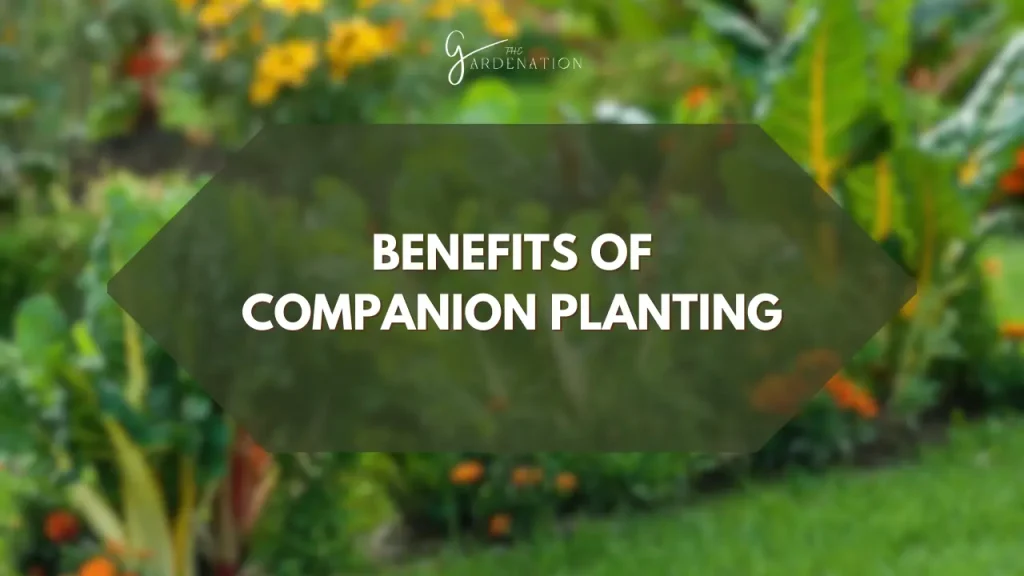
Companion planting hosts a wide range of benefits for mustard green, promoting a healthier and more productive garden. Some of these benefits are as follows.
Pest Control
Companion planting helps to reduce pests towards the mustard green in various ways.
- Trap Cropping: Using sacrificial crops such as radish around mustard green is trap cropping. Radish attracts the pests towards itself, thus these pests such as aphids, flea beetles pose all harm to it and leave the main crop unchecked.
- Repellent Odors: Using crops with a strong scent such as garlic and onion alongside or around the main crop will help to repel harmful pests from the garden. Their pungent smell interferes with the pheromones released by insects and confuse them.
- Biocontrol: Using flowering plants for companion planting will attract beneficial insects such as ladybug and wasps in the garden. These are natural predators and prey on harmful pests. In this way companion planting helps our mustard green through biocontrol.
Improve Plant Growth and Yield
Companion planting through various mechanisms helps to improve growth and yield of mustard green.
- Nitrogen Fixation: Leguminous plants such as peas and beans have root nodules containing nitrogen fixing bacteria. Planting them in the garden enriches soil health and overall nourishes the health of nearby plants.
- Pollination: Flowering companion plants attract pollinators like bees and butterflies in the garden. These pollinators also enhance the pollination process in the main crop. Thus, they increase the overall yield in the garden.
- Shade and Support: Taller varieties such as corn and bean can be interplanted between mustard green for shade and support. As mustard greens are plants of cold zones so they don’t prefer warm and direct sunlight. Additionally they provide support to other vining and climber plants that are also intercropped between them.
Health and Biodiversity
- Improve Soil Quality: As described above certain nitrogen fixing legumes enrich soil health and status. Similarly various other varieties contribute to increasing organic matter in plants. These overall benefits to the soil will ultimately flourish the growth of mustard green.
- Increase Biodiversity: Visuals are directly correlated to the feelings. Empty garden makes my heart feel empty, similarly a diverse garden with a variety of plants, hummingbirds and small insects makes me feel well. Thus companion planting enhances the ecosystem of a place as well as the mood of a person.
Best Companion Plants for Mustard Green
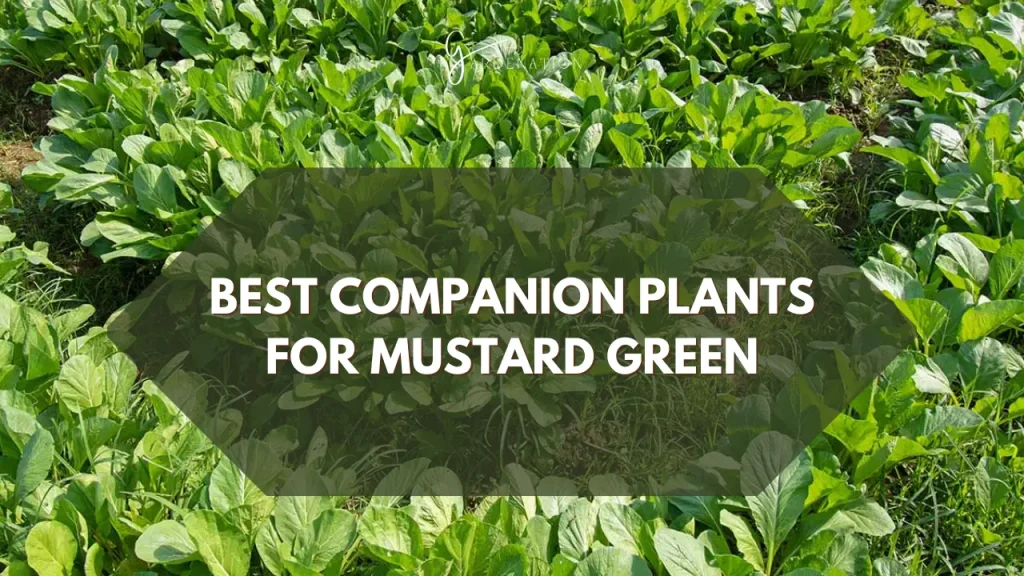
Various varieties of fruits, vegetables and flowering plants can be used as companion plants for mustard green. These varieties may include:
Vegetables
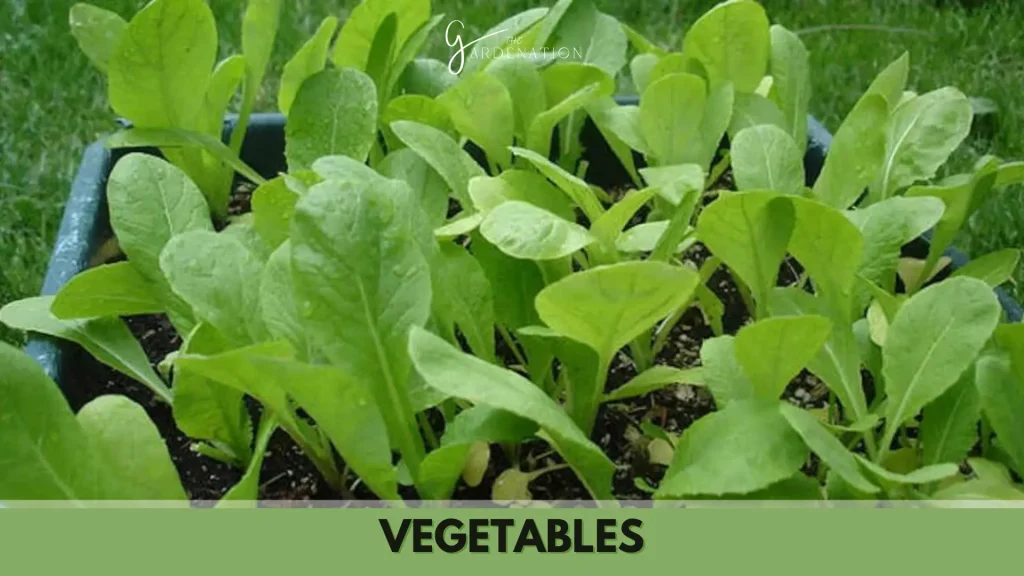
- Corns
Corn is a valuable choice for companion planting with mustard green. Since it takes longer to grow, sow seeds for corn a few weeks before planting the mustard green seeds. Ensure adequate distance so that it may not compete for light, water and nutrients with the main crop.
When the plants are grown, one can witness the potential benefits on his own. The corn will provide shade to our smaller plant and protect it during harsh conditions. Moreover the row of corn will also act as wind break. The large size and firm stem of corn will also provide support to other vining companions such as beans and peas. We have also discussed Companion Plants For Oakleaf Hydrangeas. Do Checkout!!.
- Beans and Peas
Beans and peas fall in the category of legumes, famous for nitrogen fixation. The bacterias in the root nodules convert the unavailable form of nitrogen into available and usable form for plants that increase and enrich the soil health, benefiting other plants in the vicinity. Moreover beans and peas have their own nutritional and edible importance.
Besides improving the soil fertility for mustard green, there are varieties of beans such as bush beans that can repel pests with its strong scent. Beans and peas have a shallow root system so there are less chances of competition but still manage the proper distance.
Onions and garlic usually are not liked due to their pungent smell but this characteristic is beneficial for other plants in the surroundings. The strong pungent smell of garlic and onion repel pests like aphids, whiteflies and even rodents. Garlic may have antifungal properties and reduce the risk of fungal attack.
Onions take longer to mature so planting time must be adjusted and one can choose faster growing varieties. With proper spacing garlic can be planted around the mustard green that can act as a barrier against certain pests or one can plant it between the rows, depending on the layout.
- Potatoes
Potatoes are great companion plants as they fight against one of the most harmful soil pests, nematodes. Nematodes are very small soil borne organisms that can harm any crop very badly. But it is seen that potatoes contain nematode killing properties. Early maturing planting varieties can be interplanted with mustard green.
There are few demerits of using potatoes for companion planting. Both potatoes and mustard greens are heavy feeders, so they are most likely to compete with each other for nutrients. Moreover they are susceptible to many similar diseases increasing the risks of disease when planted closer to each other.
Fruits
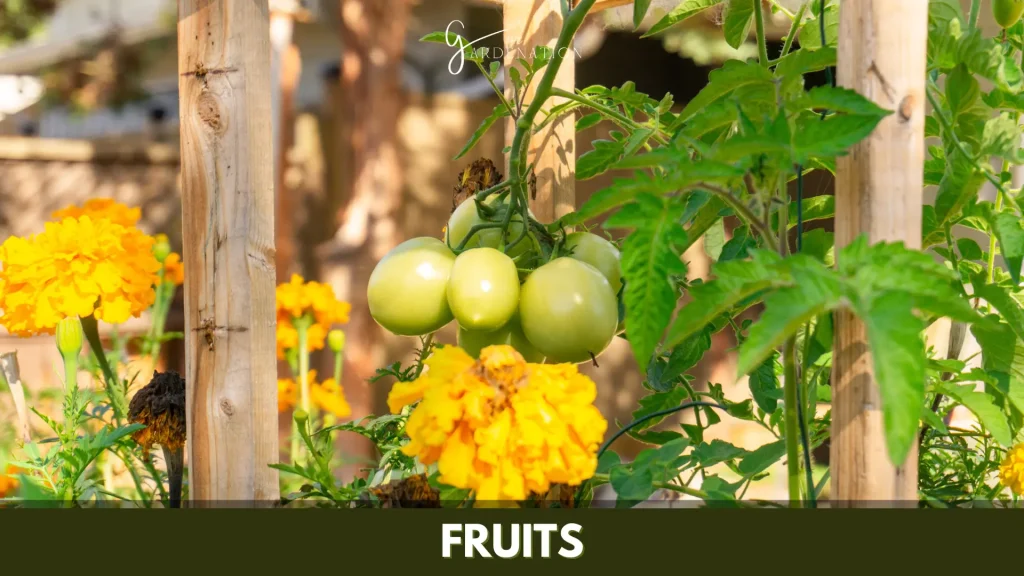
Strawberries can be planted as ground covers with mustard greens in left out spaces with potential benefits of fruit. But unfortunately it is not as compatible as other companion plants. Mustard green can compete with strawberries for sunlight if not planted far enough.
Mustard green has dense foliage covering the small strawberry plant, and sunlight will be unable to reach it. So it is not preferred to use strawberry as mustard green companion.
- Melons
Melons are good companions for mustard green if we ensure safe distance. Mustard Green has dense foliage that can cover the melons and Melons require more space that’s why more distance is necessary. They are valued for attracting pollinators in the garden such as lacewing, butterflies with their fruitier scent.
Other potential benefits may include that both melons and mustard green have different nutritional requirements and growing conditions. Melons need less water as compared to mustard green, so there are minimum chances of any competition between them.
Flowers
- Flowers are admired for their aesthetic value wherever they are planted. But they also play a vital other role in companion planting. Besides filling the space for beautiful landscape they act as magnets for attracting pollinators towards the garden.
- Various flowering varieties like Dill, Chamomile, Marigold, Alyssum can be used for companion planting with mustard green. They attract beneficial insects such as hoverflies, ladybugs that help in pest control. Marigolds are known to repel pests with their strong scent. And their foremost benefit is to attract pollinators enhancing the overall ecosystem and yield of plants by increasing its pollination process.
- While plants are beneficial, aesthetic enjoyers are likely to overcrowd the whole place with flowers. It must be avoided as too many flowering plants can badly compete with the main plant for resources.
These are a few varieties of companion plants that we can use with our mustard green. They can be planted in separate rows, alongside of the rows or around the main crop depending on preference. But always consider the right choice before planting. Because if the wrong choice is made it will harm itself as well as our main crop.
Interplanting for Mustard Green
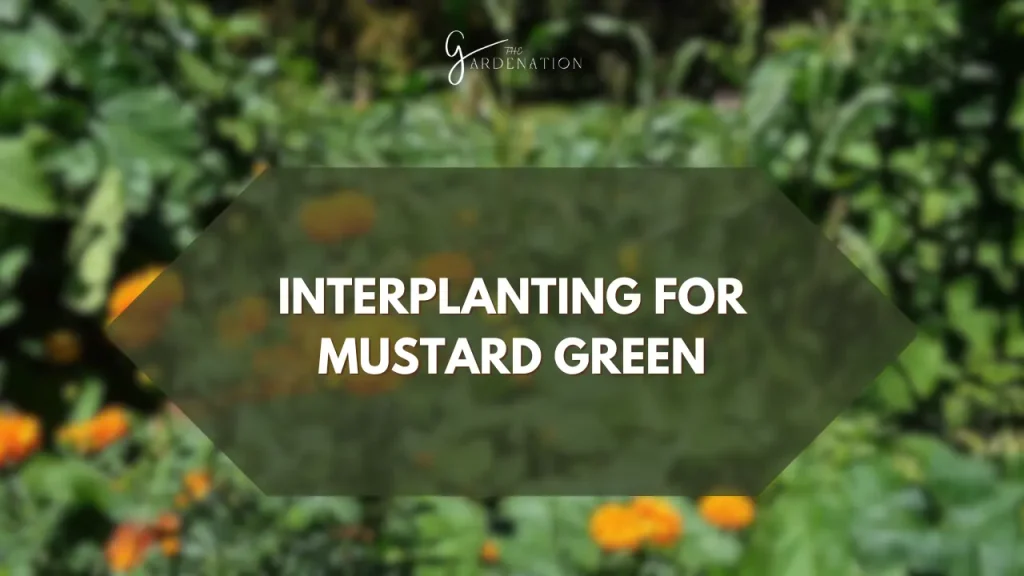
I have explained different techniques for companion planting for various purposes. But in my opinion, interplanting is the most suited approach for mustard greens. The reason is:
- Planting taller companion plants in rows with mustard plants is beneficial especially in hot climates. Taller plants like corn or beans can create shade for mustard green.
- As described above companion plants like garlic and marigolds have strong scents that deter pests like aphids and flee, protecting the main crop.
- When flowers are planted in rows with mustard green attract pollinators towards it and increase the production in crop.
Implementation of Interplanting
Choose Companion Plant
For best growth of mustard plants select those companions which help in terms of size, maturity time and beneficial properties. The criteria must be tall plants for shading, pest repellent, pollinator attraction ability.
Planning Layout
After selecting companion plants according to the criteria, design a layout. Aim for enough space to allow all plants to grow comfortably without competition. Remember that planning the best layout will give the final look to the garden.
Planting the Seed
Mustard green seeds must be sown directly into the garden bed. For interplanting with companion plants, plant them slightly earlier or later depending upon the growth rate of other cultivar.
Maintaining the Garden
After planting according to the best layout and criteria, maintain the garden properly. Regularly water, and monitor the plants for weeds, pests and disease issues.
Interplanting is the technique I prefer the most for mustard green. However the best approach might vary depending on specific goal and garden setup, which offers an effective way to get most of the benefits for mustard greens. But always consider the outcomes of cultivar being used, as it can be beneficial as well as harmful for our main crop.
Frequently Asked Questions
What are Bad Companions for Mustard Green?
Yes, there are a lot of plants that can prove to be a bad companion for Mustard green. They can have a harmful effect on plant growth as well as on soil and nutrient status of fields. For instance I don’t recommend growing other plants of the Brassica family. These plants have similar growth habits and are susceptible to the same pests and diseases. So for plants their own family members make them vulnerable.
Which is the Best Companion for Mustard Green?
Among all the varieties of vegetables, flowers and fruits, which one I would prefer the most is Dill. It is a versatile plant that is easy to grow and survives various climates. Besides attracting pollinators with its flowers, dill itself can be harvested for culinary uses as a flavorful element in meals. Additionally it doesn’t compete with mustard green for resources like taller varieties.
Conclusion
I have explained what companion planting is and why it is important. Companion planting is important for a plant to maintain its nutritional status as well as soil health. It also plays a great role in protecting plants from harmful pests and diseases. Moreover they are beneficial in providing beautiful landscapes and their production adds more significance to their various benefits.

